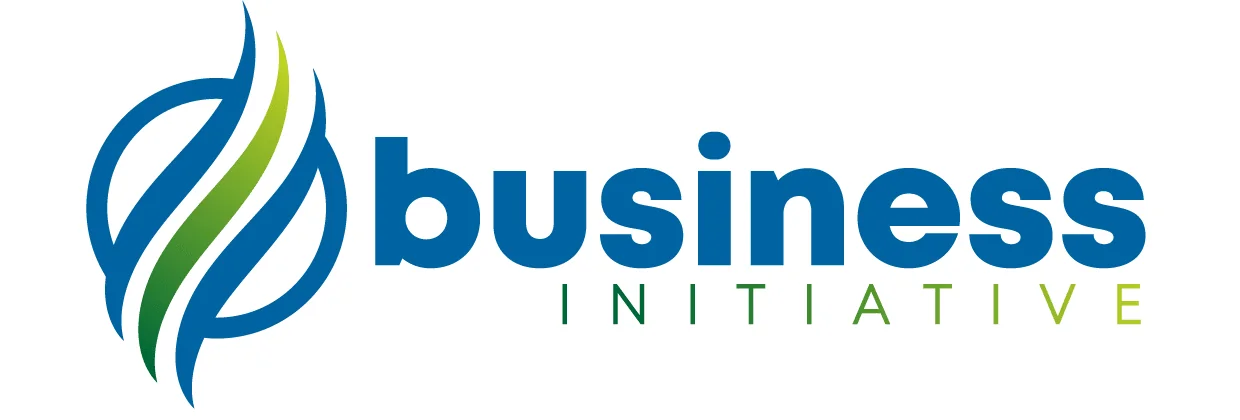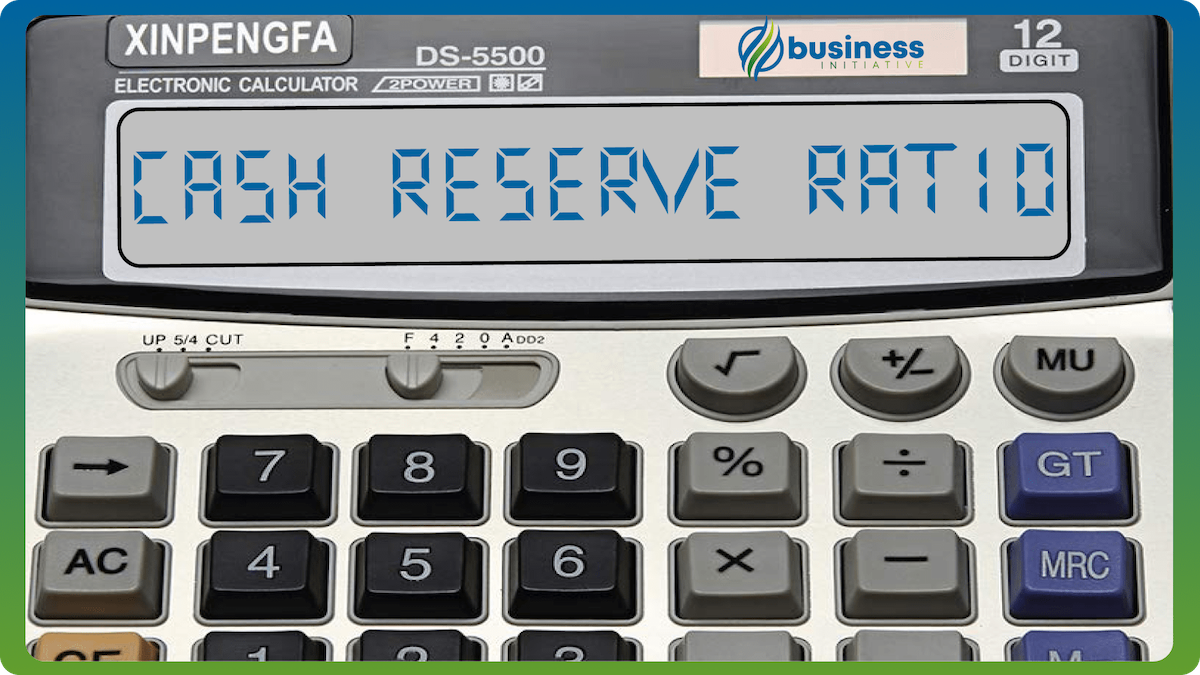Maintaining optimal cash reserves is the foundation of financial stability and strategic flexibility for any business. Your cash reserve ratio determines your ability to weather unexpected challenges, capitalize on opportunities, and maintain operations during revenue fluctuations or economic downturns.
Whether you’re managing seasonal cash flow variations, preparing for market uncertainties, planning major investments, or seeking to optimize your capital allocation, understanding and maintaining the right cash reserve ratio ensures your business remains resilient and positioned for sustainable growth.
Our comprehensive cash reserve ratio calculator not only determines your optimal reserve levels but also provides strategic insights into cash management, risk mitigation, and opportunity optimization to help you maintain financial stability while maximizing returns on your capital investments.
 Table of Contents
Table of Contents
 Key Takeaways
Key Takeaways
- Calculate optimal cash reserve levels
- Balance security with investment returns
- Prepare for seasonal and cyclical variations
- Optimize capital allocation decisions
- Maintain strategic financial flexibility
Quick Reference: Cash Reserve Benchmarks by Industry
| Industry Type | Recommended Ratio | Months of Expenses | Key Considerations |
|---|---|---|---|
| Technology/SaaS | 15-25% | 3-6 months | Rapid growth, investor expectations |
| Retail/E-commerce | 10-20% | 2-4 months | Seasonal variations, inventory cycles |
| Manufacturing | 20-30% | 4-6 months | Capital intensive, longer cycles |
| Service Business | 8-15% | 2-3 months | Lower capital needs, predictable cash flow |
Understanding Cash Reserve Ratios

Cash reserve ratio calculation involves:
- Cash Reserves: Liquid cash and short-term investments readily available
- Monthly Expenses: Average monthly operating costs and fixed expenses
- Reserve Ratio: Cash reserves divided by monthly expenses (expressed in months)
- Optimal Range: Industry-specific benchmarks for adequate reserve levels
How to Use This Calculator
Quick Start Guide
Calculate Cash Balance
Sum all liquid cash, savings, and short-term investments
Determine Monthly Expenses
Calculate average monthly operating costs and fixed expenses
Calculate Reserve Ratio
Get your current cash reserve ratio in months of coverage
Optimize Strategy
Use insights to optimize your cash management approach
Reserve Analysis
Reserve Assessment
Interpreting Your Results
Understanding your cash reserve ratio helps optimize financial management:
Reserve Level Assessment
Insufficient Reserves (Less than 1 month)
- High financial risk and vulnerability
- Limited ability to handle unexpected expenses
- Potential cash flow problems during downturns
- Immediate action needed to build reserves
Low Reserves (1-2 months)
- Below recommended levels for most businesses
- Adequate for very stable, predictable operations
- Consider building reserves for better security
- Monitor cash flow closely
Adequate Reserves (2-6 months)
- Appropriate for most stable businesses
- Good balance of security and capital efficiency
- Sufficient for normal operational variations
- Standard benchmark for established companies
High Reserves (6+ months)
- Conservative approach with high security
- May indicate missed investment opportunities
- Appropriate for volatile or seasonal businesses
- Consider optimizing excess cash deployment
Factors Affecting Optimal Ratios
Business Stability: More stable businesses can operate with lower ratios Industry Volatility: Cyclical industries need higher reserves Growth Stage: Growing businesses may need higher reserves for investments Access to Credit: Available credit lines can reduce reserve requirements
Cash Management Strategies
Building Cash Reserves
1. Revenue Optimization
- Accelerate collection processes and reduce payment terms
- Implement early payment discounts for customers
- Diversify revenue streams to reduce concentration risk
- Focus on recurring revenue models for predictability
2. Expense Management
- Optimize operational efficiency to reduce monthly burn
- Negotiate better payment terms with suppliers
- Implement cost controls and budget monitoring
- Eliminate unnecessary expenses and subscriptions
3. Cash Flow Improvement
- Align payment timing with cash flow cycles
- Manage inventory levels to optimize working capital
- Consider factoring or invoice financing for immediate cash
- Implement just-in-time delivery to reduce carrying costs
Deploying Excess Cash
1. Short-term Investments
- Money market accounts for immediate liquidity
- Short-term CDs for slightly higher returns
- Treasury bills for safe, liquid investments
- High-yield savings accounts for daily access
2. Strategic Investments
- Technology upgrades to improve efficiency
- Marketing initiatives with measurable ROI
- Equipment purchases to increase capacity
- Staff training and development programs
3. Growth Opportunities
- Market expansion into new territories
- Product development and innovation
- Strategic partnerships and acquisitions
- Infrastructure improvements for scaling
Risk Management
1. Diversification
- Maintain multiple bank relationships
- Spread reserves across different account types
- Consider geographic diversification for large reserves
- Use FDIC-insured accounts for protection
2. Liquidity Management
- Keep portion in immediately accessible accounts
- Ladder investments for regular liquidity
- Maintain credit lines as backup liquidity
- Monitor cash flow forecasts regularly
3. Contingency Planning
- Develop scenarios for different reserve levels
- Create action plans for cash shortfalls
- Establish emergency cost-cutting procedures
- Maintain relationships with potential lenders
Industry Benchmarks
Technology Companies
Typical Ratios: 3-6 months of expenses Key Considerations:
- High growth requires investment flexibility
- Investor expectations for cash management
- R&D investment timing requirements
- Market volatility and competition factors
Optimization Strategies:
- Balance growth investments with reserves
- Use milestone-based cash deployment
- Maintain higher ratios during uncertain periods
- Consider revenue-based financing alternatives
Retail and E-commerce
Typical Ratios: 2-4 months of expenses Key Considerations:
- Seasonal inventory and cash flow cycles
- Holiday season cash requirements
- Supplier payment timing and terms
- Marketing spend fluctuations
Optimization Strategies:
- Build reserves during peak seasons
- Plan for inventory financing needs
- Optimize payment terms with suppliers
- Use revolving credit for seasonal needs
Manufacturing
Typical Ratios: 4-6 months of expenses Key Considerations:
- Capital intensive operations
- Longer production and collection cycles
- Raw material price volatility
- Equipment maintenance and replacement
Optimization Strategies:
- Plan for major equipment replacements
- Hedge against raw material price changes
- Optimize production scheduling
- Consider asset-based lending options
Service Businesses
Typical Ratios: 2-3 months of expenses Key Considerations:
- Lower capital requirements
- More predictable cash flows
- Project-based revenue timing
- Professional liability considerations
Optimization Strategies:
- Focus on client diversification
- Implement retainer-based billing
- Optimize utilization rates
- Build reserves for business development
Advanced Cash Management
Cash Flow Forecasting
Short-term (13-week rolling):
- Weekly cash position monitoring
- Immediate liquidity needs assessment
- Operational cash flow optimization
- Emergency reserve activation triggers
Medium-term (12-month):
- Seasonal pattern planning
- Major expenditure timing
- Reserve building strategies
- Investment opportunity planning
Long-term (3-year):
- Strategic reserve requirements
- Growth funding needs
- Market cycle preparations
- Capital allocation planning
Technology Solutions
Cash Management Systems:
- Automated cash positioning tools
- Real-time balance monitoring
- Predictive cash flow analytics
- Integration with banking systems
Investment Platforms:
- Automated sweep accounts
- Yield optimization tools
- Liquidity management systems
- Risk assessment platforms
Need help optimizing your cash reserve strategy and financial management? Schedule a consultation with our financial planning experts at Business Initiative.
Stay informed about business strategies and tools by following us on X (Twitter) and subscribing to our newsletter.
FAQs - Frequently Asked Questions About Cash Reserves

What is the ideal cash reserve ratio for my business?
Most businesses should maintain 2-6 months of operating expenses in cash reserves, with the exact amount depending on your industry, revenue predictability, and growth stage.
Learn More...
The ideal cash reserve ratio varies significantly by industry and business characteristics. Service businesses can often operate with 2-3 months of expenses due to predictable cash flows and lower capital requirements, while manufacturing companies typically need 4-6 months due to longer production cycles and capital intensity.
Technology and SaaS companies generally target 3-6 months of runway, balancing investor expectations for efficient capital use with the need for strategic flexibility. Seasonal businesses require higher ratios (4-8 months) to weather extended low-revenue periods.
Consider your specific risk factors: businesses with concentrated customer bases, volatile revenue, or limited access to credit should maintain higher reserve ratios. Startups and high-growth companies often need 6-18 months of reserves to provide adequate runway between funding rounds.
How often should I recalculate my cash reserve ratio?
Review your cash reserve ratio monthly for growing businesses and quarterly for stable operations, with immediate recalculation after major business changes or economic shifts.
Learn More...
Regular monitoring ensures your reserves remain adequate as your business evolves. Growing companies should calculate reserves monthly since burn rates and operational needs change rapidly during scaling phases. Established businesses with predictable operations can review quarterly.
Trigger immediate recalculation after significant changes: major customer wins or losses, new product launches, market expansion, team size changes, or shifts in operating expenses. Economic uncertainty or industry disruption also warrant more frequent analysis.
Track leading indicators that affect reserve needs: customer concentration changes, market conditions, competitive pressures, and access to credit. Automated cash flow forecasting tools can provide real-time insights into reserve adequacy and projected needs.
What should I do if my cash reserves are below recommended levels?
Prioritize building reserves through improved cash flow management, expense optimization, and establishing credit facilities while avoiding major expenditures until reserves reach adequate levels.
Learn More...
Take immediate action to build reserves: accelerate accounts receivable collection through early payment discounts, optimize payment terms with suppliers, and implement strict expense controls. Focus on cash-generating activities and defer non-essential investments.
Establish backup liquidity sources: secure revolving credit lines, explore invoice factoring for immediate cash, or consider short-term financing options. Maintain relationships with potential lenders before you need them, as credit availability often decreases during challenging periods.
Create a reserve-building timeline with specific targets and milestones. Set aside a percentage of all revenue increases toward reserves until you reach optimal levels. Consider adjusting pricing strategies or payment terms to improve cash flow velocity.
Is it possible to have too much cash in reserves?
Yes, excessive cash reserves indicate missed investment opportunities and poor capital allocation, though the threshold varies by business stage and market conditions.
Learn More...
While financial security is crucial, holding excessive cash (typically more than 8-12 months of expenses for most businesses) can signal inefficient capital allocation to investors and stakeholders. Cash earning minimal returns in savings accounts might generate better returns through strategic investments in growth, technology, or market expansion.
Consider the opportunity cost of excess reserves: investments in marketing, R&D, team expansion, or operational improvements often yield higher returns than low-risk savings accounts. However, maintain adequate buffers for unexpected opportunities like strategic acquisitions or market disruptions requiring quick capital deployment.
Balance security with growth: deploy excess reserves strategically through short-term investments, operational improvements, or growth initiatives while maintaining core reserve levels. For publicly traded companies, excess cash often leads to pressure for dividends, share buybacks, or strategic acquisitions.
How do seasonal businesses manage cash reserves effectively?
Seasonal businesses should build reserves during peak periods to cover expenses during low seasons, calculating needs based on their longest revenue drought plus a safety buffer.
Learn More...
Seasonal businesses face unique cash flow challenges requiring careful reserve planning. Build reserves aggressively during peak seasons, setting aside 40-60% of excess cash flow to cover the entire off-season period plus unexpected expenses. Calculate reserves based on your historical longest low-revenue period plus 20-30% buffer.
Implement seasonal cash flow forecasting that models different scenarios: early season start/end, weather impacts, economic conditions affecting customer spending. Plan major capital expenditures, equipment maintenance, and facility improvements during peak cash flow periods.
Consider seasonal financing options: revolving credit lines that adjust with seasonal needs, inventory financing for pre-season stock buildup, or revenue-based financing tied to seasonal patterns. Diversification strategies like complementary seasonal products or services can smooth cash flow variations.
Where should I keep my business cash reserves?
Keep reserves in liquid, FDIC-insured accounts: high-yield business savings for immediate access, money market accounts for better rates, and short-term CDs for portions not needed immediately.
Learn More...
Prioritize liquidity and safety over returns for reserve funds. High-yield business savings accounts provide immediate access with FDIC insurance protection up to $250,000 per account. Money market accounts often offer slightly higher rates while maintaining liquidity, though they may have transaction limits.
For larger reserves, consider laddering short-term certificates of deposit (CDs) to earn higher returns on portions not needed immediately. Maintain diversification across multiple banks to maximize FDIC coverage and reduce concentration risk. Avoid tying reserve funds in investments that could lose value or lack immediate liquidity.
Implement tiered reserve management: keep 30-60 days of expenses in checking for immediate operations, 2-3 months in high-yield savings for quick access, and remaining reserves in money market accounts or short-term CDs for slightly better returns while preserving capital safety.
How do cash reserves differ from emergency funds?
Cash reserves are for planned operational needs and strategic opportunities, while emergency funds specifically cover unexpected expenses, disasters, or major business disruptions.
Learn More...
Cash reserves serve multiple purposes: covering normal operational variations, planned seasonal needs, strategic investment opportunities, and providing runway between funding rounds. They're calculated based on regular operational requirements and growth planning needs.
Emergency funds are specifically designated for true emergencies: natural disasters, major equipment failures, legal issues, key customer losses, or economic disruptions. These funds should be separate from operational reserves and typically represent 3-6 months of fixed expenses that continue regardless of revenue.
Maintain both reserve types for comprehensive financial protection. Total cash holdings should include operational reserves plus emergency funds, though smaller businesses may combine these into a single larger reserve pool with clear allocation guidelines for different scenarios.
How do startups determine appropriate cash reserve levels?
Startups typically need 6-18 months of operating expenses in reserves due to unpredictable revenue, limited credit access, and fundraising timeline requirements.
Learn More...
Startups face unique challenges requiring higher reserve ratios than established businesses: unpredictable revenue streams, limited access to traditional credit, longer fundraising cycles, and higher operational uncertainty. Reserve levels should align with funding milestones and provide adequate runway to achieve next-round metrics.
Calculate reserves based on stage-appropriate needs: pre-seed companies might maintain 6-12 months for MVP development and initial traction, while Series A companies often target 12-18 months to achieve scalable growth metrics. Consider fundraising timelines, which typically require 3-6 months for completion.
Balance reserve building with growth investments: while adequate reserves provide security, over-conserving cash can limit growth opportunities and signal poor capital allocation to investors. Create detailed cash flow forecasts showing reserve adequacy under different growth scenarios and funding timelines.


